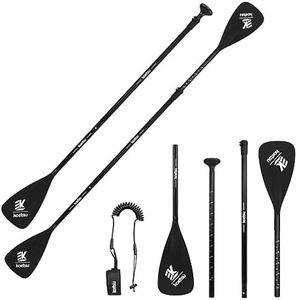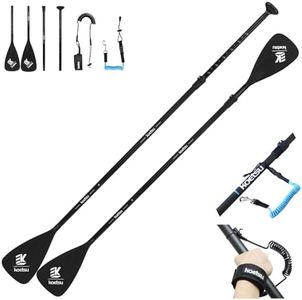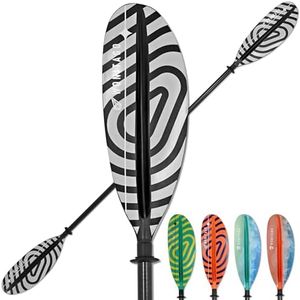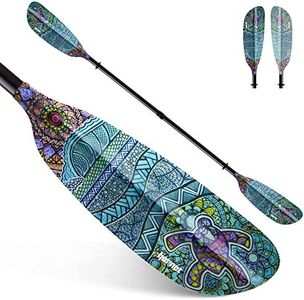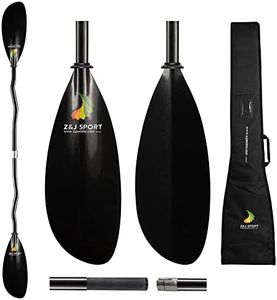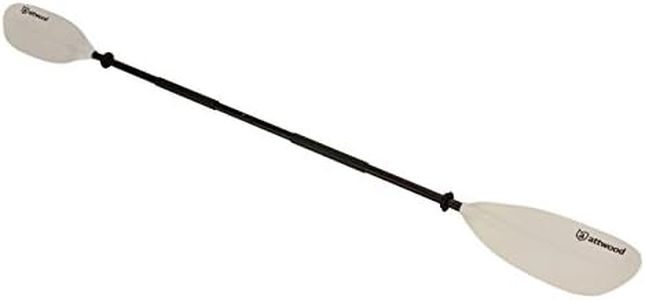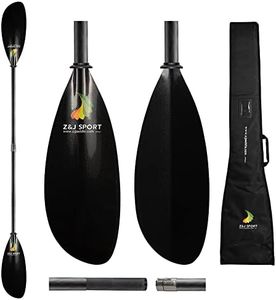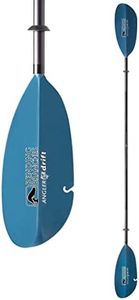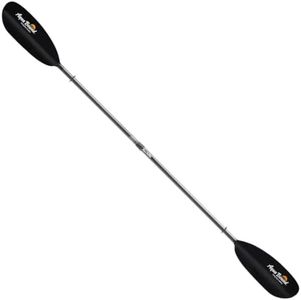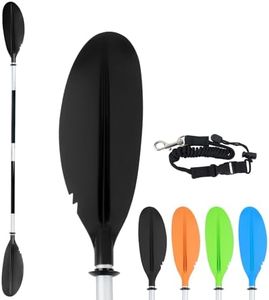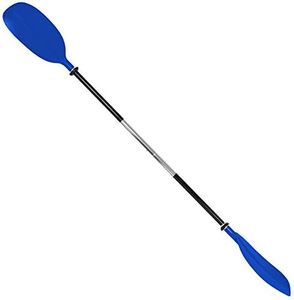We Use CookiesWe use cookies to enhance the security, performance,
functionality and for analytical and promotional activities. By continuing to browse this site you
are agreeing to our privacy policy
10 Best Kayak Fishing Paddles
From leading brands and best sellers available on the web.Buying Guide for the Best Kayak Fishing Paddles
Choosing the right kayak fishing paddle is a crucial decision for making your fishing trips more comfortable and enjoyable. A good paddle helps you travel efficiently and quietly, giving you more control and less fatigue during long sessions on the water. Since kayak fishing often requires your hands to be on both the rod and the paddle, finding a paddle that matches your strength, kayak type, and typical fishing environments will help you get the most out of your experience. To make the best choice, you'll need to consider several key specifications and understand how each one affects performance and comfort.LengthPaddle length determines how easily you can reach the water and how efficiently you can propel the kayak. If the paddle is too short, you might hit your knuckles or struggle to reach the water, while a paddle that's too long can feel heavy and awkward. Generally, wider kayaks or taller paddlers need longer paddles, while narrower kayaks or shorter users get by with shorter paddles. Think about your own height and the width of your kayak: for compact kayaks or smaller users, shorter paddles offer control, while larger paddlers or wider kayaks benefit from longer paddles. Make sure the paddle length complements your own reach and the kayak's size.
Blade ShapeThe shape of a paddle blade affects how much water you can push with each stroke and how quietly you can paddle. Wider blades generate more power and acceleration, making them suited for quick maneuvering and short bursts, while narrower blades are better for steady, longer trips with less fatigue. Some blades are slightly curved or dihedral, helping water flow smoothly and reducing flutter. Decide if you prefer quick, powerful strokes (go for wider blades) or smooth, effortless paddling on longer trips (go for a slimmer design). If stealth is essential for sneaking up on fish, a gently shaped, efficient blade is ideal.
MaterialPaddle materials influence weight, durability, and how easy it is to use the paddle for long periods. Aluminium is sturdy and affordable but can be heavier, potentially causing fatigue on longer outings. Fiberglass is lighter, offering an easier swing without compromising strength. Carbon fiber is the lightest and most efficient, making it excellent for extended paddling sessions, though it's typically less robust against rough treatment. If you often paddle long distances or value easy handling, a lighter paddle (fiberglass or carbon) is preferable. For tough conditions where durability is a priority, aluminium or reinforced materials can be a better fit.
Shaft DesignThe shaft design can be straight or bent (ergonomic), and may come in one-piece, two-piece, or even multi-piece forms. A bent shaft can reduce wrist strain, making it easier on your joints during long days, while a straight shaft is more common and can be simpler to use for varied paddle techniques. Break-apart paddles are easy for transport and storage, a valuable point if space is limited. Choose a shape and construction that matches your comfort level; ergonomic options are best for frequent, long-duration paddling, while a straight, sturdy shaft covers most basic needs and is often lighter or more compact.
Feathering (Blade Angle Adjustment)Many modern kayak paddles allow you to adjust the angle between the two blades, a feature known as feathering. Feathered blades reduce wind resistance by keeping one blade flat while the other is in the water, making paddling more efficient in windy conditions. If you often fish in breezy environments or open waters, a paddle with adjustable feathering helps maintain smoother strokes. For calmer or beginner-friendly waters, a fixed (non-feathered) paddle works just fine and is simpler to use. Think about your typical conditions and whether you want extra control in the wind when making your choice.
WeightPaddle weight can make a big difference over time, especially if you are on the water all day. Heavy paddles can tire you quickly, while lighter paddles are easier to handle and let you fish longer without discomfort. This is mostly determined by the material and design. If you want to spend more time fishing and less time feeling fatigued, aim for the lightest paddle you can comfortably use that still offers the strength and features you need.
Grip Texture and ShapeThe grip area of the paddle affects how secure and comfortable the paddle feels in your hands, especially when wet. Some paddles have molded grips or textured sections that help avoid slipping and prevent blisters. If you expect to paddle in rough water or for long distances, or if you often have wet hands, a paddle with a comfortable, secure grip will help prevent hand fatigue and keep you in control.
